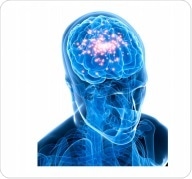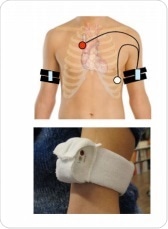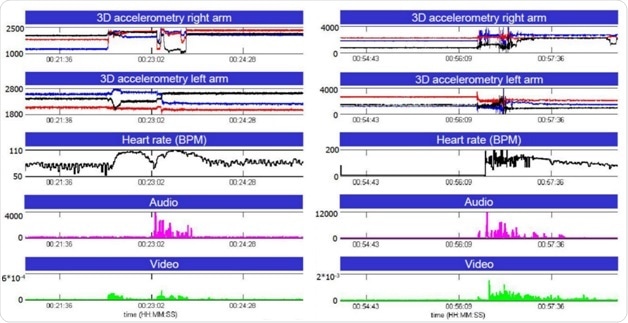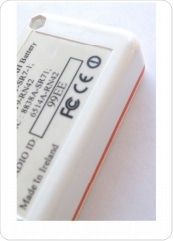Following stroke, 3–6% of patients develop acute symptomatic seizures within the first 7 days
Post-injury epilepsy (PIE) is a devastating, unpreventable consequence of traumatic brain injury (TBI) and stroke, which develops in 10 to 40 percent of survivors months, or even years later
seizures occur in about 10% of stroke patients.
Remote Seizure Monitoring using Shimmer Sensors
Case Study
Tele-Epilepsy and Remote Seizure Monitoring using Shimmer Sensors
Introduction
Shimmer offers a wireless sensor platform along with low power connections and host software to enable researchers, whether clinical, applied or academic, to use wearable sensing technologies in many different applications.
Research Objective

The World Health Organization calls epilepsy a chronic noncommunicable disorder of the brain. It is known to affect more than 50 million people all over the world.
Researchers from the Netherlands are currently studying the role of Tele-Epilepsy and Remote Seizure Monitoring, using the Shimmer platform. The research is a joint project between UMC Utrecht, Kempaenhaeghe-Heeze, and SEIN-Zwolle. The aims of the study are:
Detection and alarm triggering when a major nocturnal epileptic seizure occurs: this is done using an integrated Multi-Sensor Detection Instrument (MSDI) which uses a combination of electrocardiography (ECG) and 3-D accelerometry data. This data is collected with the help of Shimmer sensors, with linkage to audio and automated video frame analysis.
Research Method
The objective of this project is to bring out a new device that uses multiple modes of sensing to detect the occurrence of nocturnal epileptic seizures as well as to set off an alarm so as to alert caregivers in this case. The system uses an MSDI which uses Shimmer sensors, audio signals and video streams, yielding both ECG and 3-D accelerometry data.

A diagnostic trial was first conducted to arrive at the best combinations of patient factors and sensory modalities from among the four used in the MSDI, which could reliably detect a seizure. The groups targeted by the study included children under 16 who were staying at home, adolescents who were mentally challenged, and adults living under care, either at home or in another care environment.
Two Shimmer sensors were used per patient, with the accelerometer worn on the right upper arm and the accelerometer-ECG combination on the left upper arm. The data arriving from the sensors was fed to a PC which integrated the input and sent an alarm if the resulting output went beyond the set threshold. Real-time video and audio streams were set up between the PC and a monitoring device.
Data-Driven Results
The Shimmer sensors were preferred in this study because they were easily adaptable as well as being capable of being set to required configurations. The researchers were able to take advantage of the open platform and its easy interfacing with developer tools such as MATLAB, which was not easily available with other providers at the time of the research at a price which was competitive.
The images below show the MSDI as well as the algorithms that the team developed to analyze the four signal modalities with some examples of acquired data. This was taken from recordings of two patients, the one on the left showing a tonic seizure and that on the right a tonic-clonic seizure.

Concept to Delivery – 90% Efficiency
The choice of the Shimmer platform was based upon the CE certification, among other reasons. This hardware was already classified as a medical device, which made it possible to integrate it into a model used for research on human patients, unlike other research projects.

The MSDI using Shimmer sensors has now been tested in more than 50 patients who were in hospital, in four different centers, comparing the yield against the gold-standard for EEG-video monitoring which is the established method to monitor patients who may potentially develop seizures. This reliance upon EEG-video monitoring is because of the reliability of neural feedback in this type of event.
However, this research was favorably assessed in the hospital setting before being tested on patients who were at home. The latest study also showed excellent results with 90% efficacy in detecting nocturnal seizures as compared to the EEG monitoring technology. More work remains to be done, including refining the software which runs real-time analysis of the data, integrating the sensor data and validating the results in this domestic situation.
Shimmer Research – Sensing Solved
While many solutions compete for place in this niche, Shimmer boasts of advanced technology, supporting software and specialized applications which help to control the type of data that is acquired.
This in turn helps researchers look into how to interpret the data collected by the Shimmer platform, as well as to develop new algorithms to make sense of the kinematic and physiological data that pours in with these tools.
In summary, the benefits of using Shimmer technology include:
- Shimmer suits most research applications because of its ability to help arrive at the meaning of the raw data, and apply this meaning for the benefit of patients and their caregivers
- Shimmer solutions reduce the time taken for development of an application and its cost by 80%
- Shimmer technology yields data that is high-quality, robust and accurate
- The solution is easy to customize to specific applications
- It gives the researcher full control over what data is captured, as well as over its interpretation and analysis
- Shimmer solutions can be leveraged with the range of vital support tools available
- Shimmer solutions are used by a wide range of researchers, both independent, as well as in collaboration with academic and research institutes
No comments:
Post a Comment